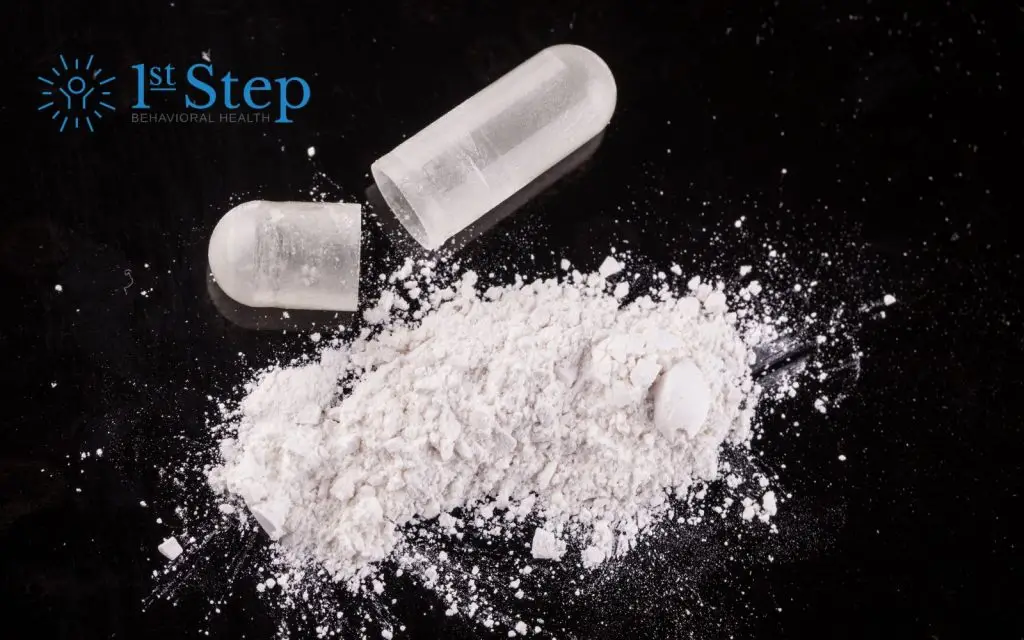Vyvanse (lisdexamfetamine dimesylate) is a prescription medication used to treat attention-deficit hyperactivity disorder and binge eating disorder in children and adult patients. When prescribed and taken orally as directed, the medicine can improve focus, help with controlling impulsive behaviors, and curb food cravings tied to binge eating.
For many, it’s a reliable part of a broader treatment plan that might include coaching, accommodations, and behavioral therapy. But when people crush and snort Vyvanse, they turn a carefully engineered therapy into a high-risk behavior with real medical, legal, and emotional fallout. Misuse can lead to drug abuse, physical dependence, psychological dependence, stimulant use disorders, and life-threatening events.
Misuse of prescription stimulants isn’t rare, either. In the United States, about 3.7 million people ages 12+ reported misusing prescription stimulants in 2022—a context that underscores why clear education matters for families and adult patients alike.
Why Snorting Vyvanse is Risky
Vyvanse is a prodrug stimulant. That means it’s pharmacologically inactive until the body’s enzymes convert it into its active drug, dextroamphetamine. This design intentionally slows the onset and smooths the effect curve compared with some other stimulant medications, helping reduce the “rush” that can feed misuse.
In other words, Vyvanse orally delivers a measured and sustained activation of the central nervous system—the brain and spinal cord systems that govern attention and arousal. The FDA label states it plainly: “Lisdexamfetamine is a prodrug of dextroamphetamine.” It also carries a boxed warning for abuse, misuse, and addiction and classifies the product as a Schedule II controlled substance.
What Snorting Does to the Nose, Sinuses, and Throat
Your nasal passages are lined with delicate, well-vascularized tissue that warms and filters air. They’re not designed to handle the binders, dyes, and fillers in prescription drugs. Repeated insufflation can cause:
- Chronic irritation, crusting, and nosebleeds
- infections of the nasal mucosa and sinuses
- Damage to the nasal septum, sometimes progressing to a perforation (a literal hole) that can whistle, impair airflow, or deform the bridge.
Medical literature consistently links intranasal drug misuse—including stimulants—to septal perforation and necrotic injury. Reviews and case reports describe perforations from intranasal stimulants and other various branded medications misused this way, as well as from drugs like heroin and even acetaminophen when misused intranasally. The take-home isn’t the specific substance; it’s the route: insufflation is traumatic to tissue and can cause lasting structural harm.
Damage isn’t limited to the nose. Powder can drip into the back of the throat and be aspirated, irritating the larynx and bronchi. People report hoarseness, painful swallowing, cough, and recurrent infections. Over time, that “just a quick boost” can become months of ENT visits and procedures—an exceptionally high price for a method that doesn’t reliably change the pharmacologic effect profile of a prodrug like Vyvanse.
Systemic Health Risks: Heart, Brain, and Beyond
Like many stimulant medications, Vyvanse increases blood pressure and heart rate. In people using high doses, misusing, or combining with other substances, risk can escalate to arrhythmias, high blood pressure, and—in worst-case scenarios—heart attack or stroke. The product’s warning sections explicitly highlight increased heart rate and blood pressure and caution those with underlying cardiac disease.
On the psychiatric side, stimulant misuse can precipitate anxiety, agitation, and in vulnerable individuals, frank psychosis—with hallucinations, delusions, and disorganized thinking.
Put differently: snorting doesn’t add therapeutic value—but it does push risk upward by encouraging unapproved administration and easier re-dosing, which together can raise overall exposure and compound psychiatric and cardiovascular danger.
Why Misuse Can Snowball into Addiction
Vyvanse is a Schedule II controlled substance because it can cause physical dependence and psychological dependence. In the brain, dextroamphetamine increases dopamine and norepinephrine—the nerve chemicals responsible for reward, motivation, attention, and arousal. With escalating, non-medical use, the reward system adapts; you may find yourself needing more to feel “normal,” or feeling flat, edgy, or exhausted without it. That pattern is the doorway to a substance use disorder—and specifically to stimulant use disorders.
Vyvanse withdrawal symptoms after heavy or prolonged use often include crushing fatigue, low mood, hypersomnia or insomnia, vivid dreams, and substantial appetite changes. Those who experience withdrawal symptoms may reach for more pills to self-treat the crash, entrenching the cycle. (That’s one reason structured medical detox can be so helpful.)
“Vyvanse vs. Adderall”: Similarities, Differences, and Myths
The internet is saturated with comparisons—“Vyvanse similarities Adderall,” “Vyvanse Adderall,” “both Adderall and Vyvanse,” “FDA approved Adderall.” Here’s the clinical reality: Vyvanse is a prodrug stimulant that must be converted to dextroamphetamine before it works; that’s why its onset is smoother.
Adderall (and Adderall XR) are mixed amphetamine salts—Adderall combines dextroamphetamine and levoamphetamine—already active when absorbed. Both are FDA-approved to treat ADHD; Vyvanse also indicates binge eating disorder. Both are Schedule II prescription stimulants.
Misuse risks are similar. Whether someone decides to snort Adderall or snort Vyvanse, the dangers of snorting are the same: nasal septum injury, infection, increased cardiovascular strain, higher total exposure, and a shorter path to drug addiction.
Who’s Most at Risk—and Why People Start
People begin abusing Vyvanse for many reasons: to “pull an all-nighter,” to extend work shifts, to lose weight, to experiment socially, or because the bottle is in the medicine cabinet. The mix of performance pressure, curiosity, and access to prescription drugs can be especially potent on college campuses.
For those with binge eating disorder or other eating disorder histories, stimulant misuse can become entangled with body image and appetite suppression. For people with anxiety, bipolar disorder, or trauma histories, misuse can worsen symptoms, destabilize sleep, and heighten the risk of manic or psychotic events. The result can be a complicated clinical picture where mental health, stimulant exposure, and sleep collide to produce crisis.
Short- and Long-Term Complications to Watch For
Short-term red flags after insufflation can include recurrent nosebleeds, crusting, sinus pain, post-nasal drip, hoarseness, chest tightness, pounding heartbeat, panic, or disorganized thoughts. If you recognize your experience here, it’s a signal to get medical help—and to be honest about how you took it.
Over the long term, repeated intranasal use may lead to chronic rhinitis, loss of smell, and structural degradation of septal cartilage. In the worst cases, people develop large perforations or erosions that extend to the palate or nasopharynx—problems that can require surgery and still never fully resolve.
What recovery looks like (and why it works)
If you’re reading this because you or someone you love is struggling with Vyvanse abuse, there’s a path forward—grounded, practical, and proven.
Medical assessment and detox
A clinician can screen for cardiac risk, check blood pressure, evaluate sleep patterns, and develop a safe taper or medical detox plan. The goal is to reduce withdrawal symptoms like fatigue, depression, and rebound appetite while protecting mood and safety.
Evidence-based therapy
Behavioral therapy—primarily cognitive behavioral therapy (CBT)—helps unravel the thought-behavior loops that keep stimulants in the driver’s seat. Therapy also supports skills for managing stress, insomnia, and cravings (e.g., stimulus control for sleep, structured problem-solving for addressing late-night work demands).
Integrated care for co-occurring conditions
Treatment works best when it also addresses anxiety, depression, trauma, and other sleep disorders, as well as nutrition and exercise for energy regulation. For people with binge eating disorders, plans should include targeted psychotherapy, dietetic support, and—when appropriate—non-stimulant medications.
Bottom line: snorting isn’t faster help—it’s speedier harm
Vyvanse is designed to work when taken orally. Snorting it doesn’t meaningfully shortcut the conversion to dextroamphetamine; evidence shows comparable systemic exposure to oral dosing. The FDA label explicitly warns that snorting increases the risk of overdose, psychiatric events, and cardiovascular problems.
Intranasal misuse can injure the nose, damage the nasal septum, and cause infections and structural loss. Repeated misuse can spiral into substance use disorder, Vyvanse addiction, and severe withdrawal symptoms when you stop.
If you’re ready to move toward Vyvanse recovery or Vyvanse addiction treatment, reach out to the specialists at First Step Behavioral Health now. Compassionate, evidence-based care exists—and it works. Contact our team to learn more about your treatment options or to schedule an intake appointment.
Frequently Asked Questions About Snorting Vyvanse
1. Can snorting Vyvanse cause long-term changes to my sense of smell or taste?
Yes. Chronic irritation and damage to nasal tissues can impair olfactory nerves, reducing your sense of smell. Since smell is closely tied to taste, you may also experience a diminished ability to taste food. In severe cases, these changes can be permanent, even after use is stopped.
2. Are there any non-stimulant alternatives for ADHD or binge eating disorder treatment?
Yes. Non-stimulant prescription medications such as atomoxetine (Strattera) and certain antidepressants can be used for ADHD. For binge eating disorder, selective serotonin reuptake inhibitors (SSRIs) and psychotherapy approaches such as cognitive behavioral therapy are options. These alternatives may have lower abuse potential but must still be prescribed and monitored by a qualified clinician.
3. If Vyvanse is a prodrug, does that mean it’s completely safe from abuse?
No. While Vyvanse’s prodrug design makes it harder to misuse compared to some immediate-release stimulants, it can still be abused—especially in high doses or through unapproved methods like snorting. The slower onset may reduce, but does not eliminate, the drug’s addictive potential.
4. Could snorting Vyvanse interact with other medications or substances differently than taking it orally?
Yes. When insufflated, Vyvanse bypasses some of the initial digestive processes, potentially altering its interaction with other drugs, particularly those affecting blood pressure, heart rhythm, or the central nervous system. Combining Vyvanse misuse with alcohol, other stimulants, or certain antidepressants can magnify health risks.
5. Does snorting Vyvanse make it harder to stop using compared to oral misuse?
Often, yes. The act of insufflation can become a behavioral habit in its own right, independent of chemical dependence. This ritualized behavior—combined with any psychological and physical dependence—can make quitting more challenging and may require targeted behavioral interventions during recovery.
Resources
- U.S. Food and Drug Administration (FDA): Vyvanse information
- Substance Abuse and Mental Health Services Administration (SAMHSA) Treatment Finder
- National Institute on Drug Abuse (NIDA): Prescription Stimulants DrugFacts
- American Psychiatric Association (APA): Diagnostic and Statistical Manual of Mental Disorders, Fifth Edition (DSM-5) — diagnostic criteria for stimulant use disorder.
- WebMD: General patient guidance on Vyvanse, Adderall, and stimulant misuse risks.
Jump to a Section
Call (855) 425-4846
